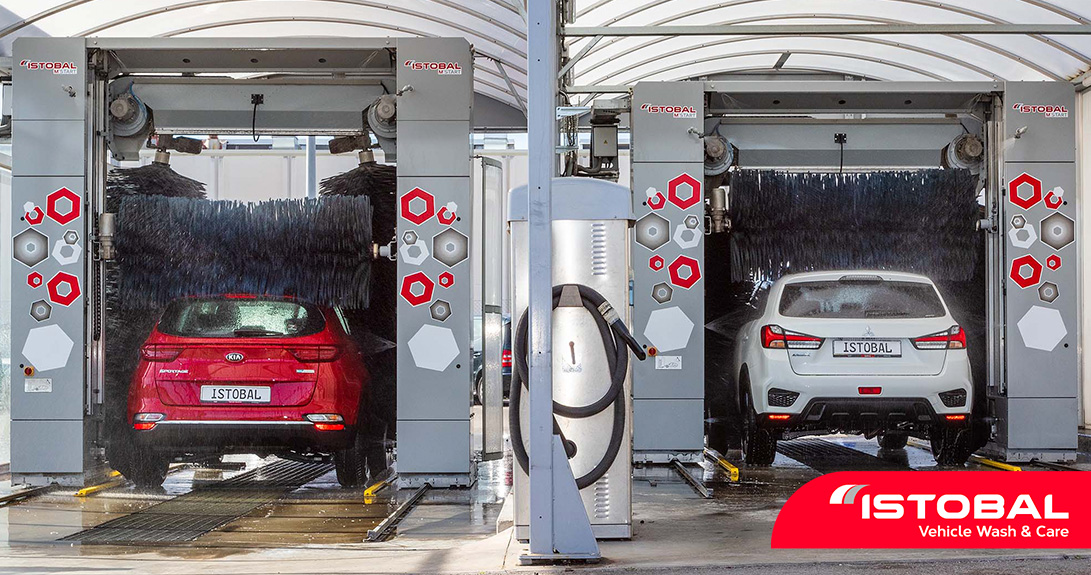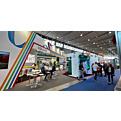ISTOBAL has today highlighted the importance of thoroughly cleaning the exterior and interior of the car before carrying out any disinfection process, as the organic matter present on surfaces makes it difficult for disinfectant products to be effective.
The Spanish company has launched a series of recommendations for safely sanitising vehicles. In this regard, it has pointed out that, according to the WHO (World Health Organization), cleaning is an essential first step in surface disinfection processes since it eliminates pathogens and reduces the viral load. Organic matter can prevent a disinfectant having direct contact with a surface and inactivate the germicidal properties or the mode of action of several disinfectants.
For this reason, ISTOBAL recommends thoroughly cleaning both the exterior and interior of the car, as a preliminary step to the correct and effective sanitization of the vehicle. In addition, remember that dirt on the windscreen or the number plate can result in a penalty if it affects visibility behind the wheel.
The company also recommends going to reliable car wash facilities that use effective equipment and products for the sanitization of vehicles and that are suitable for all surfaces. For private cars, we generally recommend completely sanitizing the exterior every 15 days or frequently sanitizing the main contact parts outside the vehicle. As far as interior sanitation is concerned, the recommended frequency is at least once a week, although this will depend on the use of the vehicle and the people travelling in it.
First, exterior sanitization
Taking into account the usual distribution of car wash facilities in private vehicles, external cleaning and sanitization can be done first and then the interior can be done after. In the case of cars that transport additional people to the main user (such as taxis, VTC (chauffeur-driven cars), car share vehicles, medical and emergency vehicles, among others) we advise cleaning and sanitizing the interior first in order to preserve the safety of employees and customers.
Specific programmes for sanitization in ISTOBAL rollovers and jet wash areas can be found in car wash facilities as a final complement to a regular wash programme, as well as sprays for spraying disinfectant onto the surface of the vehicle. Door handles, boot handles and mirrors are the main points to consider when sanitizing the exterior of the car. Once the sanitization process has been carried out, it is recommended not to rinse the car in order to let the disinfectant product work.
Avoid the use of hydro-alcoholics for interior sanitation
With regard to interior sanitation, ISTOBAL recommends avoiding the use of hydroalcoholic gels, as they can damage certain surfaces of the vehicle, as well as dry out the dashboard material and affect screens or plastics.
To ensure more effective interior sanitation, it is also essential to thoroughly clean the interior first, emptying the car of all unnecessary objects, thoroughly vacuuming the entire cabin, and cleaning the carpets and other surfaces such as the dashboard and upholstery.
ISTOBAL then recommends starting the interior sanitization process with a manual spray containing disinfectant to spray the interior of the vehicle, paying particular attention to the areas with greatest contact such as the steering wheel, gearbox and handbrake. Other important points are: door handles, buttons to open and close the car and adjust the mirrors, seat belts, seats, armrests, sound system and air conditioning control, touch screen, steering column stems such as indicators or windscreen wipers, seat adjustment levers, floor mats, air vents, windows, wing mirrors and car keys.
The Spanish company recommends spraying all surfaces evenly and thoroughly, leaving the car doors open, the windows down and allowing the product to work for 5 minutes. Any excess product should then be removed with an absorbent cloth or, alternatively, with paper.
For indoor sanitization, ISTOBAL has also developed ozone equipment that completely sanitizes the cabin in 8 minutes, including the ventilation system and particle filter using the vehicle's air recirculation. This equipment also eliminates unpleasant odours by oxidation.
Another of the recommendations issued by ISTOBAL when sanitizing the vehicle is the use of gloves and a mask, as well as disinfecting the hands and clothing used after the process. Also remember that no person or animal should remain inside the cabin while the vehicle is being sanitized.






























